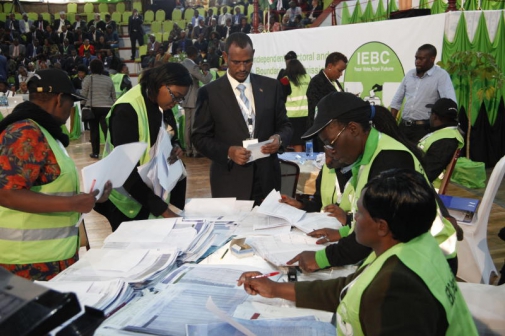×
The Standard e-Paper
Fearless, Trusted News

IEBC officials verifying results at the Bomas of Kenya before presidential results were released. [Wilberforce Okwiri, Standard]
Glaring inconsistencies are emerging about the actual number of voters who took part in last Tuesday’s polls and the source of the provisional results posted on the portal.